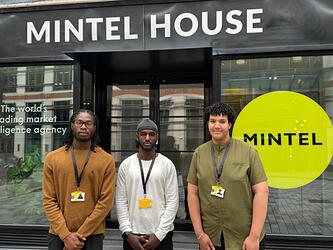Julia Hobsbawm’s 6 steps to ‘connectiveness’
Hobsbawm — a former PR agency founder and author of Fully Connected, which she described as "mainstream and also a business book" — was speaking to delegates at today’s ( 13 March) MRS annual conference, Impact 2018.
Hobsbawm explained she had spent a "long time trying to persuade people that networking was a great thing" and began to become "more interested in the wider implications of ‘connectiveness'".
For both her recent book, and today’s speech, Hobsbawm wanted to use a number of points that did not exceed the "cognitive limits of seven", so she chose the six-sided "hexagon" and a section of honeycomb in particular, as a visual cue.
She went on to outline her six ideas:
1. Scale and speed
Hobsbawm disagreed with the notion often expounded by tech evangelists saying that speed and scale are "fabulous". "Sometimes small scale gives us as much intelligence as large scale," she said, citing how Netflix gained the insight that people enjoyed binge watching via an ethnography study.
2. The hierarchy of communication
"Whatever else we think about connection, the leitmotif that runs through connectivity is communications," she said. She showed a diagram of a pyramid, with face-to-face communications at the top, written work in the middle and broadcast at the bottom. "My point is not to say ‘don't communicate on social media', but please contextualise it," she said. "It doesn't foster as much understanding as speaking to someone. Instead of hitting reply to an email, pick up the phone."
3. Generation gaps
Hobsbawm paraphrased Shakespeare: "We're much more alike than unalike."
4. Social health: wellbeing 2.0
Social health, she said, was the glue that should hold society together — "who you connect with and how you connect with them" — and if society remains "stuck in wellbeing 1.0" then tragedies such as the Grenfell fire will occur.
5. Jazz ensemble vs orchestras
"I think organisations and individuals that have social health are more like a jazz ensemble than an orchestra, where everyone has a defined role and there’s a hierarchy," Hobsbawm said.
6. Tie the KNOT
Hobsbawm said that KNOT refers to three areas that needed connecting: "The functional flow of knowledge", or else "we'll be drowning in ‘infobesity'; managing your networks, such as contacts on LinkedIn; and using and planning your time.

We hope you enjoyed this article.
Research Live is published by MRS.
The Market Research Society (MRS) exists to promote and protect the research sector, showcasing how research delivers impact for businesses and government.
Members of MRS enjoy many benefits including tailoured policy guidance, discounts on training and conferences, and access to member-only content.
For example, there's an archive of winning case studies from over a decade of MRS Awards.
Find out more about the benefits of joining MRS here.











0 Comments